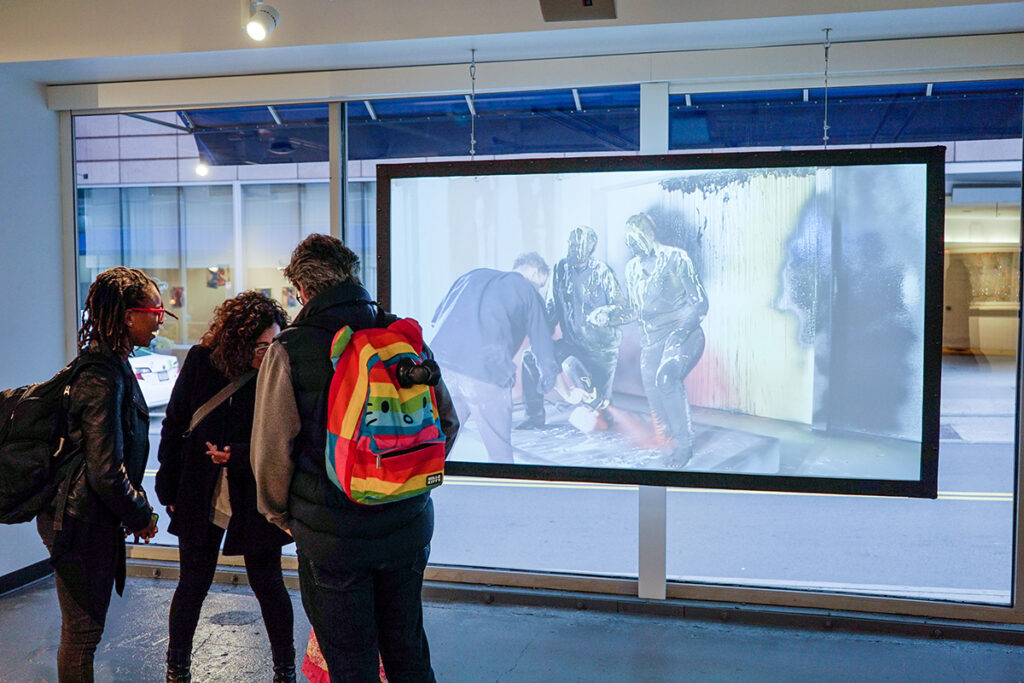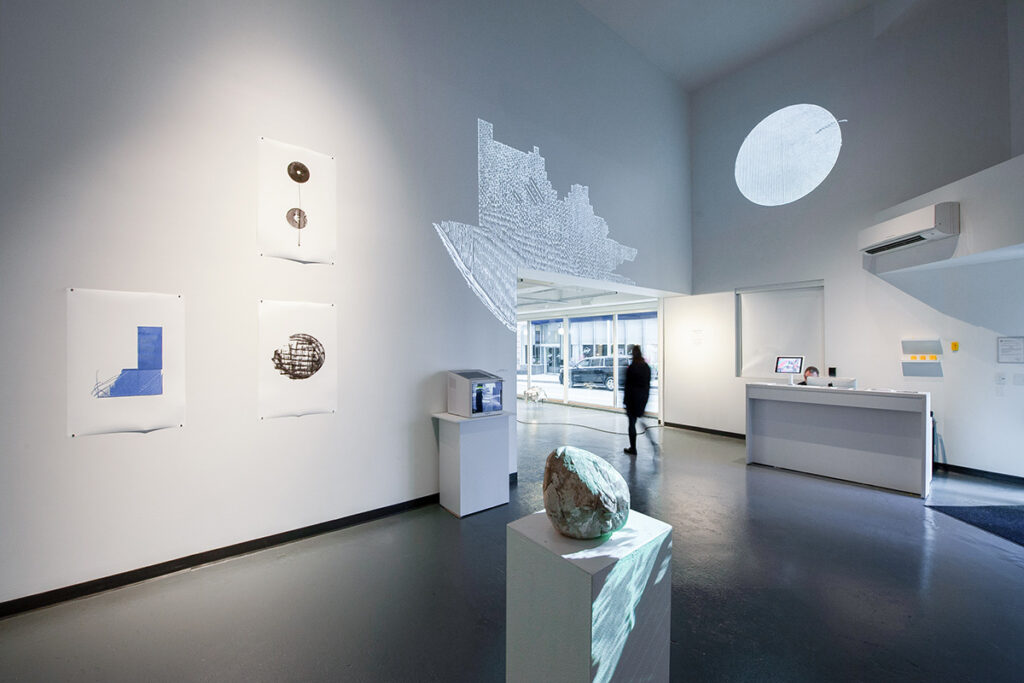Emerson Contemporary Awarded Grant for Gallery Improvements

Emerson Contemporary’s galleries will soon be more accessible, better wired, and more flexible, thanks to a grant award from the George I. Alden Trust.
The $114,000 grant for capital improvements will cover upgrades at the Media Art Gallery on Avery Street and the Huret & Spector Gallery, located in the Tufte Performance and Production Center. The Alden Trust previously awarded Emerson Contemporary a $100,000 grant in 2015 to support physical improvements, as well as student and public engagement.
Emerson Contemporary Director Leonie Bradbury, distinguished curator-in-residence, said she hopes the latest improvements will enhance the experience of the space for both visitors and contributing artists, seeing the gallery as a place both parties can learn from and engage with one another.
“It is exciting to see the space be the best it can be,” Bradbury said.
The current grant targets four specific areas: floors, walls, lighting, and electricity. Bradbury and her team hope the improvements will allow artists to execute their work as they envision it, and not be constrained by the physical limitations of the space. Improvements will be made over the summer of 2022.
The floors in the Media Art Gallery are currently sloped on an uneven, rough surface. Bradbury and her team hope to use the grant to scrape and sand the gallery floors, adding a new layer of professionally finished surface concrete, which will be sustainable and require little maintenance in years to come. Fixing the sloped floors will also make the space more accessible to wheelchair users and the visually impaired. They are also looking to install automatic door-opening at the front door, back door, and bathrooms.

Half of the gallery space in the Media Art Gallery consists of windows, which make it difficult to exhibit digital art projects in the day because of the natural light. The team proposes to solve this issue by building a plywood-clad “exhibition wall” across three of the window bays, with the dual goal of blocking natural light and increasing exhibition space by 20 percent.
Additionally, the grant aims to build a plywood-clad exhibition wall in the gallery’s Project Room, which currently has a protrusion in the middle of it, making it unable to be used as a projection surface. The proposed wall should similarly increase usable wall space by 30 percent, providing more opportunities to showcase work.
“The flexibility for the amount and type of artwork we will be able to show is exciting,” Bradbury says.
For lighting, the Media Art Gallery is currently limited to using six fixed ceiling strips, with no track lighting or gallery lights in the Project Room, and limited space for targeted lighting in the Atrium Gallery. In addition, the Media Art and Huret & Spector galleries are not fully wired, which means important exhibition areas do not have access to power sources. While extension cords have been used in the past, Bradbury said, this solution does not give a professional appearance to the space, nor is it an efficient. The grant proposes to alleviate many of these “dead” spots by doubling the current number of tracks and gallery lights, and providing more electrical outlets.
The George I. Alden Trust supports the work of institutions of higher education, YMCAs, and other educational and nonprofit organizations.
Categories